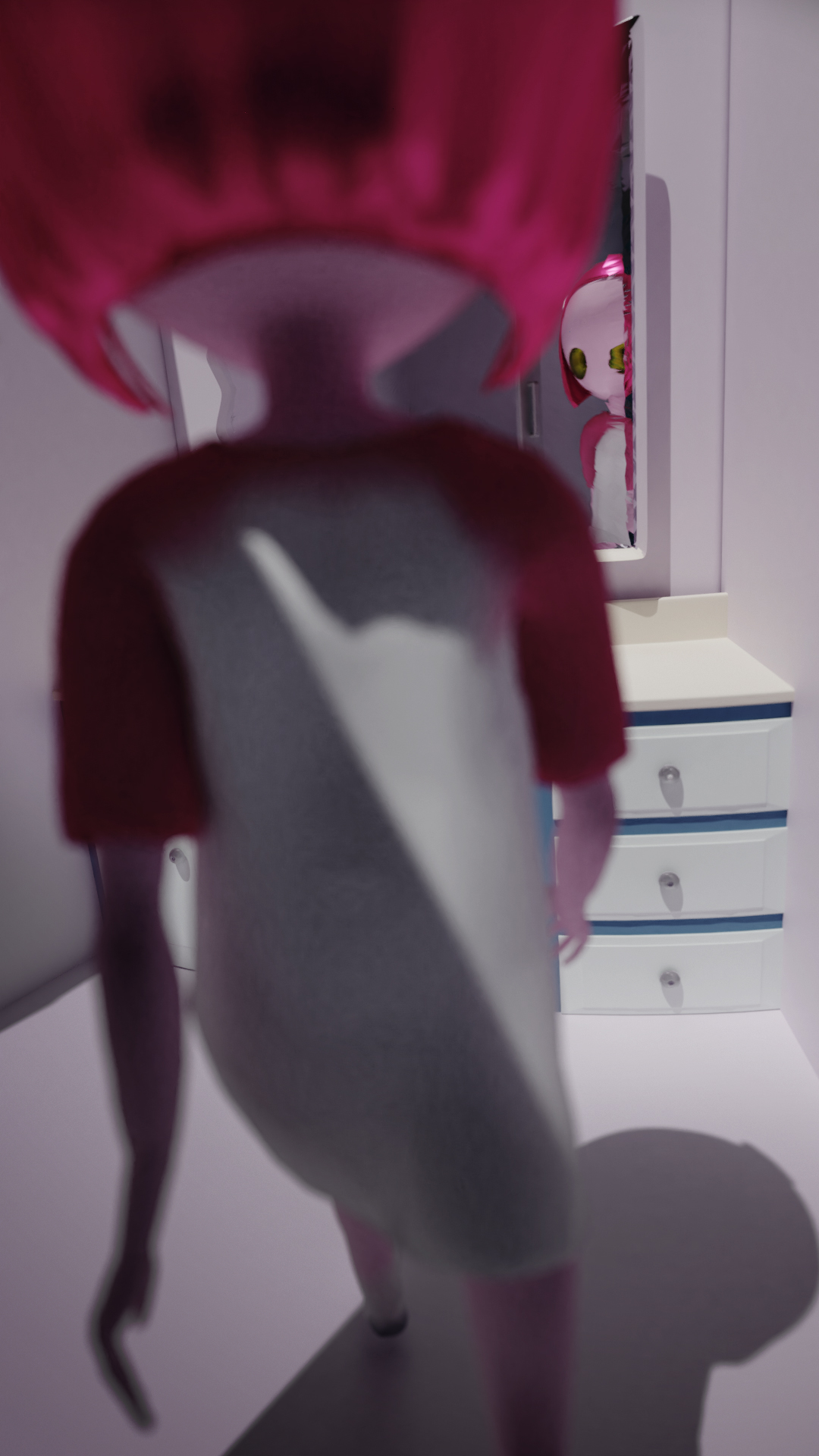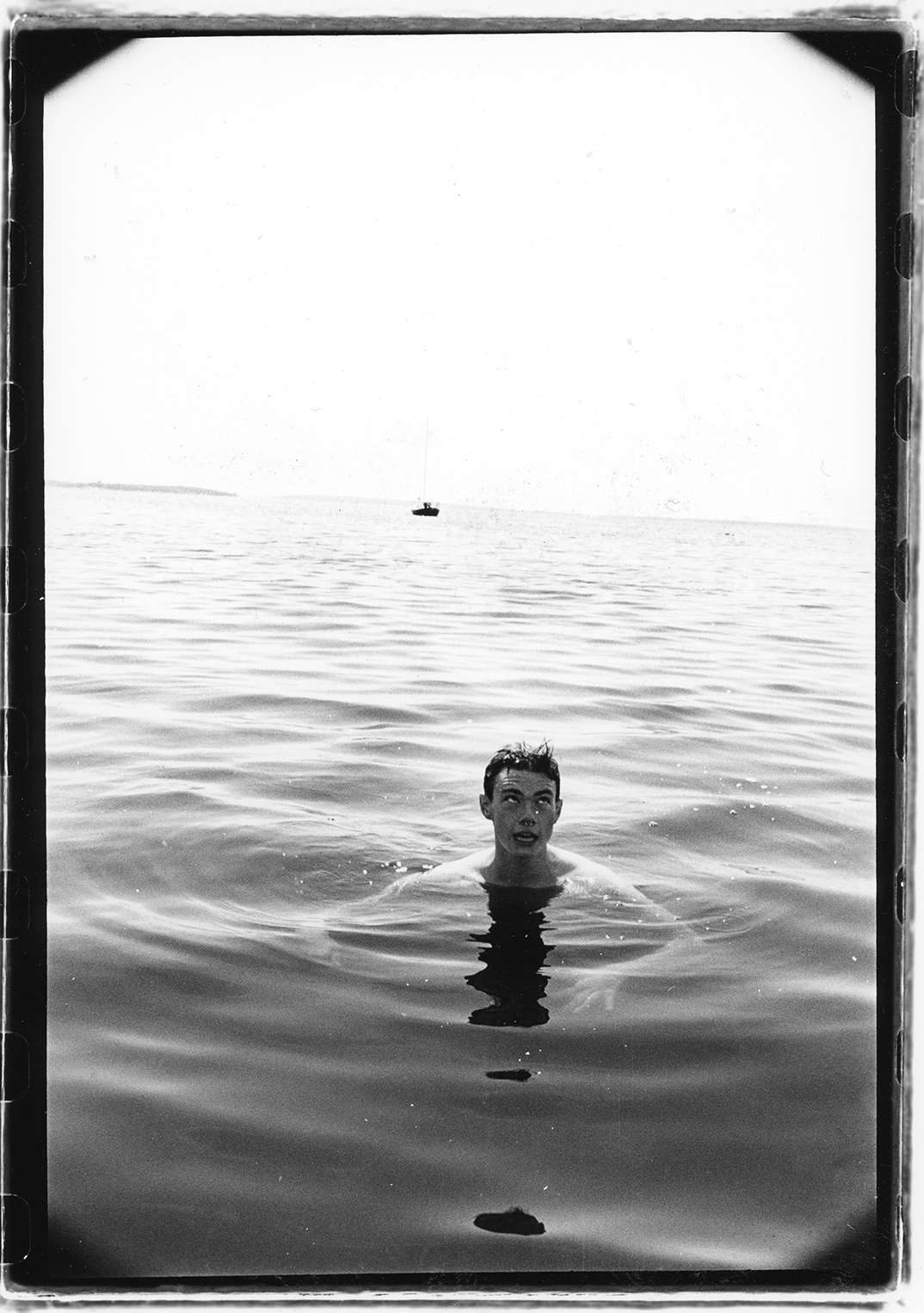Imagine coming across a piece of art online as one-of-a-kind as the Mona Lisa. You decide to buy an NFT for that artwork — a kind of digital certificate of authenticity. Once the certificate is made, it is impossible to change. Anyone can see the full ownership history of the certificate, so you only have to verify that the original creator of the NFT is the artist to know that you own a legitimate certificate.
Simplified, this system of certificates is the technological value that NFTs, or non-fungible tokens, aim to bring to art: a trusted transaction between buyer and artist that removes anyone else from the equation.
At Brown and Rhode Island School of Design, NFTs have become part of the curriculum for a student-run course and the marketplace of choice for a new art collective, sparking polarized discourse on their implications.
Blockchains — the technology behind NFTs

Non-fungible, meaning non-replaceable, tokens are created and stored using blockchain technology. A blockchain is an unchangeable, universally-accessible digital list that securely records transaction history. This technology opens up new opportunities for how artists can make money from their art that are not possible with the sale of traditional paper art, according to Professor of Computer Science Maurice Herlihy, who serves as an advisor for blockchain developers and teaches the course CSCI 1951L: “Blockchains and Cryptocurrencies.”
For instance, the blockchain can be programmed to give the original artist of the NFT a percentage of the resale value every time it is sold, Herlihy said.
This technology could prevent the fate of famous artists like Vincent Van Gogh, whose paintings skyrocketed in value long after his death while his estate was left without a means of compensation from resales, he added.
NFT ownership is different from traditional ownership because while owning a physical piece of artwork lets you control other people's access to that work, owning an NFT instead gives you an indisputable claim over that unique digital object, which is independent of the artwork itself and other people's ability to view it. Just like any other collectible, an NFT only holds as much monetary value as others are willing to pay.
Beginning with Bitcoin, early blockchains used a mechanism known as proof of work, which essentially relies on using a computer to solve computational problems in order to “mint” an NFT. The first person to solve such an equation “mines” that spot. Mining is essential to having a decentralized trust system, where no one individual or company has the power to verify the authenticity of the art and oversee transactions. These features of authenticity and transparency are the basis of blockchain technology.
But proof of work is “hugely inefficient” in the amount of energy consumption required per transaction, Herlihy emphasized. The most popular blockchain for NFTs, Ethereum, has considered transitioning from proof of work to a less energy-intensive mechanism called proof of stake.
Rather than putting computers to work and using energy to create the decentralized trust mechanism, proof of stake utilizes a system where people stake their own crypto for the chance to validate a transaction and receive a reward in crypto for participating in the validation process.
While forms of cryptocurrencies have existed before, Bitcoin, and the popular blockchains that came after it, became the first decentralized transaction services to remove a middle man or operator, Herlihy said. Owned by no one, and open to anyone to use, this decentralization is fundamentally different from how digital transactions have operated.
“People are realizing that blockchains are good for things more than simple payments,” Herlihy said — and NFTs have become a prime example.
RISD students launch NFT collective M3DIUM

M3DIUM Studio, an NFT artist collective co-founded by RISD seniors Arlo Walker and Quinn Lockwood along with Lars Delin, a senior at Wesleyan University, launched March 14 on OpenSea, the world’s first and largest NFT marketplace, according to its website. The collective aims to be “the first ever NFT collection dedicated to the works of practicing student artists,” according to M3DIUM’s press release.
Our collective is “not like a bunch of monkey faces” created anonymously, Walker said, referring to the Bored Ape Yacht Club NFTs that have sold for millions. M3DIUM is “a community of people that decided to try something, and it's an … ongoing experiment.”
The student-run collective was created with the goal of breaking down barriers and allowing student artists to monetize their work outside the traditional art market, where agents and galleries can be complex and costly to navigate, with commercial gallery representation estimated to cost the artist around a 50% commission. M3DIUM harnesses the collective fanbases and social media followings of its artists, Walker said.
The group also wants to influence where the NFT market is headed, Walker and Lockwood said. The co-founders hope to make the NFT market a place where artists can legitimize their work in a respected manner.
The name M3DIUM reflects the group’s aim to bring together art from different mediums, with the number three representing how the collective fits into Web3, a purported next generation of the internet that claims to be decentralized, Walker said. M3DIUM’s first collection features 82 works from 35 artists including animated GIFs, scans of oil paintings, animated short films, photo prints and computer-generated images.
The co-founders said that curating artists for the collective meant finding a variety of art forms that would translate well to the NFT format. For instance, both digital art and physical art scanned into a digital format can be minted as NFTs into the collection.
Each time a piece of art is sold, the artist and M3DIUM co-founders divide the profit 60% to 40% respectively, according to the artist contract. Prices are set between 0.1ETH and 0.3ETH, which is equivalent to a range of around $300 to $900, though prices fluctuate, Delin wrote in an email to The Herald.
Originally, the collective planned to mint NFTs using Ethereum, which cost at least $100 to mint one NFT. The founders’ cut of the sale would have been used to cover some of the minting cost, Walker said, along with the fees to sell on OpenSea which the founders still cover. In response to backlash from other students over environmental concerns, M3DIUM switched from minting on the Ethereum blockchain to minting on Polygon, which uses proof of stake and has no upfront mining costs.
The terms of the contract have not changed since the collective’s move to Polygon, Delin wrote. The 40% cut is a lower charge to artists than the average traditional gallery, according to the founders. “And we do not have any exclusive rights to any of their work,” he added.
If a piece of art is not sold, no transfer of money takes place, leading to a “zero risk” situation, he said. As of April 13, the collective had 3.6ETH traded in total sales for 21 items on its OpenSea page, equivalent to around $12,444. Since its launch, M3DIUM has been featured on Opensea’s list of “Notable Drops” on its homepage as well as its social media, which has helped the collective grow its following, the founders wrote.
The co-founders noted that M3DIUM’s goal is not to replace physical art. “We're attempting to use the NFT as basically a way for people to be patrons of (the artists’) physical art practice, as well as make digital art something that (the artists) could do on the side,” Walker said. They hope that buyers interested in an NFT can become exposed to the artist’s larger portfolio and learn more about their work.
The co-founders have ambitions to expand their NFT collections to include drops with artists from other top design schools and collaborate with nonprofits and Web2 companies looking to enter the NFT space.
“We see Web3 and digital art like this being a core part of the curriculum at any design school within the next five to 10 years,” Walker said.
GISP 0003: NFTs, Blockchain & Art

Instead of forming an art collective, some Brown students have approached NFTs in a classroom setting.
Ally Zhu ’22 and Nikolas Lazar ’22 were first formally introduced to NFTs while working together at management consulting company Arthur D. Little over the summer. After working on a project that involved NFTs, they became interested in the field and decided to form an independent study to get course credit and “dig more into the space,” Zhu said.
In the fall, the two designed a syllabus to plan the logistics of the class and were surprised by how many students were interested in the course. Despite the high demand, they had to cap the class at 20 due to University guidelines.
According to the syllabus, the goals of the independent study include understanding the socio-economic, political and technological rise of blockchain technology in NFTs and creating informed predictions about the future of NFTs. The course looks at blockchains and NFTs from three perspectives: the arts, computer science and economics. The creators added that they consider the class’s slate of guest speakers from different backgrounds one of its highlights.

The course concludes with a final NFT project, Zhu said. Students can choose to make this anything from an argumentative paper about the positive or negative role NFTs play in the art world to a computer science project on minting, launching and marketing a set of NFTs.
Zhu has made her own NFT known as Paradise Lost. The art is one of her “favorite digital art pieces” that she has made, and she wanted to test out the blockchain technology for herself.
Although he’s one of the leaders of the class, Lazar is still pretty skeptical about NFTs and cryptocurrency as a whole, he said. But he believes this technology is here to stay, and he wants to learn more about the impact NFTs will have in areas such as politics or the environment.
“I’m much more skeptical of crypto than I am of NFTs,” he said. “I think at least with NFTs there’s somewhat of a use. You can’t do anything with Bitcoin.”
NFTs see pushback with concerns over economic factors, purpose of art

After announcing the creation of the M3DIUM Collective, the co-founders and artists in the group received criticism online from other RISD students as student artists split over whether they thought NFTs do more harm than good.
Asher White, a RISD senior studying sculpture, was caught in the backlash after she expressed on social media that it was pointless and hypocritical to criticize people who sell NFTs.
“In our fury at NFTs, we’re forgetting to look inwards toward the ways in which we’re all participating in a system of exploitation, which is the art institution and the gallery scene,” she said to The Herald.
At the time of posting, she was unaware of M3DIUM and said anger was directed towards her for appearing to defend the group.
“NFTs very quickly became the new thing to hate, but the thing we should hate is the ‘mechanisms’” that NFTs, RISD and elite galleries take part in, White said, explaining that these spaces ultimately tokenize, exploit and extract artists’ art “to be traded by millionaires and clout-chasers, reducing art to a site of commercialization.”
While she said that she believes NFTs are “hollow certificates of value,” one benefit is the promise that the value of artists’ work will not be mediated by anything other than the market. She argued that the formation of a collective like M3DIUM “nullifies the appeal of the NFT” by having a third-party — the co-founders — involved in the art transactions.
For some, such as Lindsay Caplan, assistant professor of history of art and architecture, NFTs cannot be viewed separately from cryptocurrency. From her background as a professor, she primarily views the NFT movement as “financial speculation,” or a risky financial endeavor.
Caplan views NFTs as a natural continuation of the “long and exciting history of artists who are really thinking of new modes of creation and engagement.” But, she still is “deeply disturbed” by how the ease of access into the NFT market “cannot be uncoupled with right wing populism.” The right wing leanings of cryptocurrency advocates has been a documented trend.
Lately, established galleries such as Sotheby’s, Christie’s and Pace have even taken part in the metaverse and the presentation of NFTs. Caplan said that since these large galleries are participating in this space, it “may have staying power,” but she is unsure about the extent to which it will have a role in society.
“I think NFTs will be there as a format. What kind of effects it will have remains to be seen,” she said. “Will more interesting artists pick up on it? Will we see more unexpected things? I hope so.”
Professor Alex Poterack, lecturer in economics, described NFTs and their purpose as “very silly” in an email to The Herald. Poterack pointed out that someone could spend tens of millions of dollars on an original Rembrandt painting, but anyone could get a high resolution photo of the same painting for free. From an economic standpoint, he believes the value of the product is that it was painted by an artist “who's been dead for over 350 years.” He wrote that if someone painted an exact copy, it would be worth a fraction of the price.
Poterack views cryptocurrency, particularly Bitcoin, as a way to make it easier to “buy drugs” and “break the law.”
“As near as I can tell the only financial pro is that NFTs make money laundering easier, … but even then, I'm not sure,” he wrote. “Is it easier to launder money by selling a Bored Ape Yacht Club NFT than by slapping some paint on a canvas and calling it contemporary art?”
Herlihy expressed concerns over the lack of security around the actual artwork represented by the NFT, which is linked to the blockchain as a URL. For many existing NFTs, there aren’t technical measures to prevent the owner of the URL from vandalizing the file linked to the NFT, he said.
“The part that's on the blockchain is tamper proof and secure, but the part you care about” –– the file linked to the NFT –– “is insecure,” he added.
Environmental impact of NFTs

NFTs are infamously known for their impact on the environment.
A problem with proof of work, the mechanism Etherum uses, is that as Bitcoin becomes more valuable, there will be “a lot more people effectively running their computers all the time to try and mine the Bitcoin,” said Ricardo Bayon, founder and partner of Encourage Capital and part of the advisory council for the Institute at Brown for Environment and Society. Encourage Capital is a “a new breed of asset management firm focused on profitable and strategic investments to solve critical social and environmental problems,” according to Bayon’s website.
Due to running on proof of work, Ethereum’s latest annualized electricity consumption is estimated to be similar to the total electricity consumption of the Netherlands — a source of strong concern about its environmental damage that underlies the blockchain’s long-promised merge to a less energy-intensive system, Bayon added.
Anticipating a blockchain future beyond NFTs
While types of blockchains and cryptocurrency may come and go, Herlihy believes some form of this technology is “inevitable.”
“We need the ability to do global commerce (that) existing mechanisms aren't really set up to do,” he said. Centralized organizations like large credit card companies have established systems for risks like fraud, but they take time to process and charge fees on every transaction for managing all of these payments.
“If you can replace them with something that works just as well but is more decentralized, then the world would be in a better place,” he said. But current blockchain replacements are not yet better than standard means of payment, he added.
According to a January estimate, one Ethereum transaction consumed as much energy as several hundred thousand VISA transactions.
Bayon is skeptical about whether renewable energy efforts are in the near future for cryptocurrency transactions.
“Some of the advocates of Bitcoin and the proof of work mechanism say the future is going to be renewable energy powering the mine,” Bayon said. “I don’t think we’re there yet and we’ll see if that’s the way it comes.”
 ARTS & CULTURE
ARTS & CULTURE
